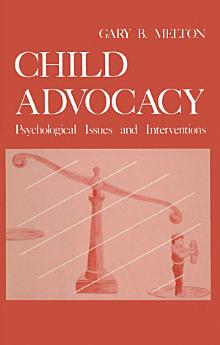Child Advocacy: Psychological Issues and Interventions
Dec 2012 · Springer Science & Business Media
Ebook
228
Pages
reportRatings and reviews aren’t verified Learn More
About this ebook
The details of the history of child advocacy have been vividly described in an article by Takanishi (1978). In reviewing her work and that of others, four historical phases in child advocacy can be identified: 1. The first period was the evolution of the concept of childhood as a distinct and separate developmental stage. Aries (1962) has described how the concept of childhood as a period different from adulthood did not evolve philosophically until the sixteenth century. It was only after that time, through the influence of Rousseau and other philosophers, that childhood was seen, at first romantically, and later more realistically, as a special time for growth and learning, with unique styles and mechanisms. 2. It was not until the nineteenth century, however, with the rapid rise that a formal effort was made to of science and major socioeconomic changes identify and try to meet children's needs. A number of organizations specifi cally devoted to children arose and attempts to help children in ways consis tent with the developing knowledge became a major social issue. Initially, the interest was in children's health with infant mortality, child labor, and safety as paramount issues. Although socioeconomic factors initiated the change (children's labor was no longer economically necessary), a basic humanistic philosophy underlay this phase. Major dedication to alleviating the pain and injury done to children who were helpless to defend themselves and who were being deprived of opportunities for growth became the goal.
Rate this ebook
Tell us what you think.
Reading information
Smartphones and tablets
Install the Google Play Books app for Android and iPad/iPhone. It syncs automatically with your account and allows you to read online or offline wherever you are.
Laptops and computers
You can listen to audiobooks purchased on Google Play using your computer's web browser.
eReaders and other devices
To read on e-ink devices like Kobo eReaders, you'll need to download a file and transfer it to your device. Follow the detailed Help Center instructions to transfer the files to supported eReaders.




